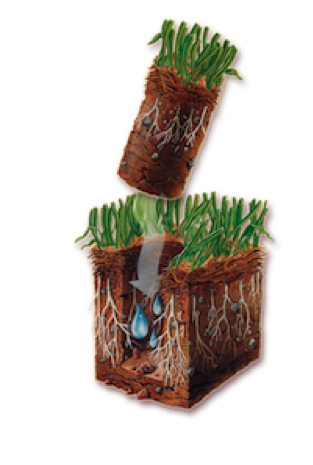Forgive me for the corny title, but we get a lot of questions about lime this time of year. When we say [Read More...]
Aeration FAQ:
 What is aeration?
What is aeration?
Power core aeration is one of the most important and beneficial cultural practices available for your lawn. Aeration helps control thatch and soil compaction. It allows water, air and nutrients to get to the roots of your grass.
How does aeration work?
Aeration removes thousands of small cores of soil 1″ to 2” in length from your lawn. These cores break down and “melt” back into the lawn after a few rainfalls, mixing with whatever thatch exists on your lawn and speeding up the breakdown of that thatch. The holes created by aeration allow fertilizer and water easier access to the roots. Turf roots naturally grow toward these growth pockets and thicken in the process. Aeration holes also relieve pressure from compacted soils, letting air and water move more freely into the root zone.
What are the results?
Performed annually, lawn aeration means better response from the water and fertilizer that are applied to the lawn. It means fewer problems with insects and fungus disease. All of these results translate into a greener, thicker lawn to enjoy all season long.
How often should I aerate my lawn?
I recommend aerating at least once per year while the grass is actively growing. Turf areas that receive a lot of traffic (i.e. athletic fields) need to be aerated more often.
When should I aerate my lawn?
As long as the grass is actively growing, you can aerate. I don’t recommend aeration on dormant lawns.
For Educational Purpose Only
This page is for educational purpose only. Southern Lawn & Pest is not responsible for damages or death to plants due to usage of this information. It is to be used as a general guideline which vary depending on the geographic region you live in, so results will vary from region to region. Remember, the best way to protect your investment is to seek professional advice for your lawn.

